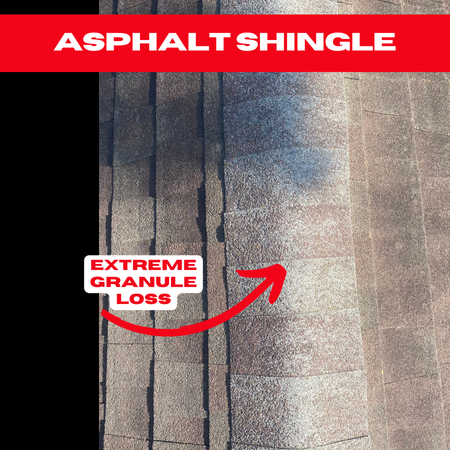
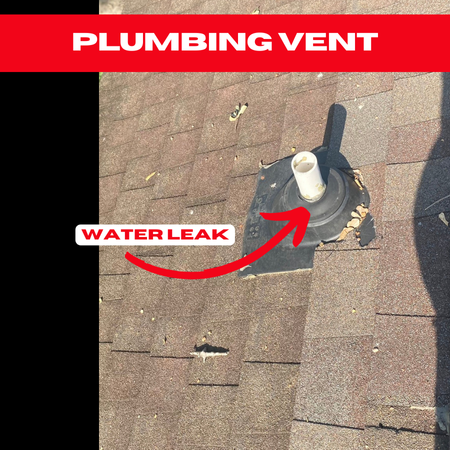
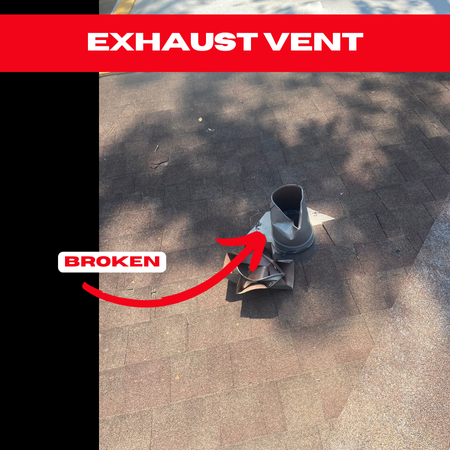
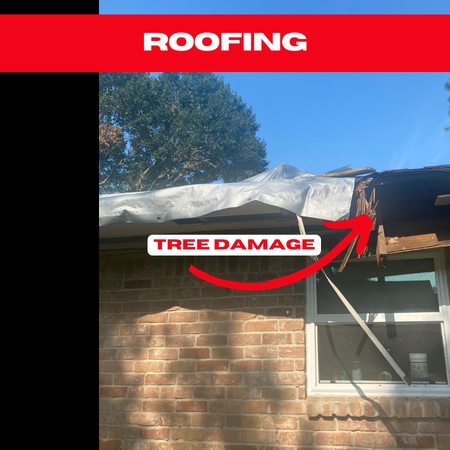
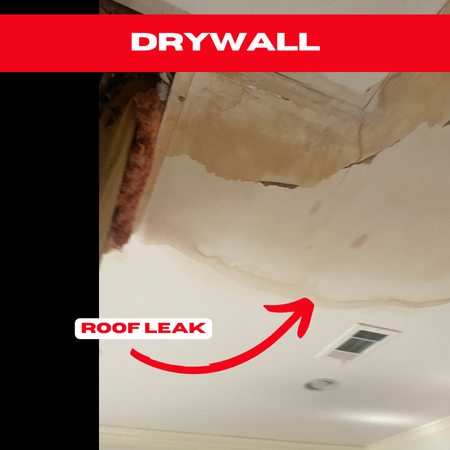
Key Highlights of the Most Common Roof Problems in Houston Inspections
- Regular roof inspections in Houston are crucial for identifying and addressing potential problems early on.
- Common roof issues include leaks, damaged shingles, faulty flashing, and poor ventilation.
- Neglecting roof maintenance can result in costly repairs, structural damage, and compromised safety.
- Understanding the signs of roof problems, such as water stains, missing shingles, and sagging gutters, is essential for homeowners.
- Timely repairs and preventative measures, like regular inspections and cleaning, can extend the lifespan of your roof.
Introduction
A home inspection is essential when purchasing a house, and evaluating the roofing system should be a top priority. Identifying any roofing issues early benefits both buyers and sellers, ensuring the home is structurally sound. Addressing roof repairs or potential damage in advance can prevent costly problems down the road. Scheduling a professional roof inspection with a trusted roofing expert provides peace of mind and helps maintain the long-term durability of your home.
Identifying Common Roof Issues
A Houston roof inspection from Amstill Roofing provides a comprehensive evaluation of your roof’s condition. The goal is to identify weak spots and assess overall performance. Our experienced inspectors carefully examine the roof’s surface, flashing, gutters, drainage systems, and attic spaces, looking for signs of wear, damage, and any risks that could compromise your home’s protection.
Finding roofing problems early with a trusted Houston roofer is especially important, as Houston’s unpredictable weather can quickly escalate minor issues into major structural damage. Whether it’s a small leak or significant wear and tear, Amstill Roofing’s expert team ensures homeowners receive timely repairs and proactive maintenance, helping to extend the lifespan of their roof and protect their investment.
Recognizing the Signs of Wear and Tear
Recognizing the signs that your roof is wearing out is very important. This helps you to take care of it sooner and avoid costly repairs. A common issue with asphalt shingles is when they start to curl or buckle. This happens because the shingles lose their flexibility and bend up or down. This may mean there are problems like moisture damage or bad ventilation underneath.
Another clear sign of trouble is missing or damaged shingles. Strong winds, hail, or just aging can cause shingles to move, crack, or blow away. When shingles are missing, the underlayment is exposed to rain or snow. This increases the risk of leaks and could lead to structural damage.
You should also check your gutters and downspouts. If they are sagging, blocked, or overflowing when it rains, there is likely a drainage problem. Clogged gutters can cause water to gather on the roof, which can lead to leaks and significant damage over time.
The Impact of Weather on Roof Integrity
The weather has a big impact on the health and life of your roof. Sunlight with strong UV rays can slowly harm roofing materials. This is especially true for asphalt shingles, which can fade, crack, and curl. High heat can also make the roof bend and stretch, weakening its structure over time.
Heavy rain and storms can cause serious damage to your roofing system. Strong winds can blow off shingles and knock loose flashing, creating spots where water can get in. Continuous rain can wear down roofing materials, leading to leaks and moisture problems.
In colder areas, the freeze-thaw cycle is another issue. When water gets into tiny cracks and freezes, it expands, putting stress on the roofing materials. Going through this cycle many times can harm the roof’s strength, resulting in leaks and structural issues.
Top 10 Roof Problems Uncovered During Inspections
Roof inspections are a key part of taking care of your home. Skilled roofers can spot problems on your roof that you might miss. Finding these issues early can save you from expensive repairs later on. A roof inspection looks closely at all parts of the roof. This helps to find any current or potential problems quickly.
A detailed inspection report gives homeowners a clear picture of their roof’s health. It lists any issues and suggests repairs or maintenance are needed. This important information helps homeowners make smart decisions about their roofs. It protects their investment and keeps their homes safe and comfortable.
1. Leaks and Moisture Buildup
- Roof leaks and trapped moisture can cause serious structural damage. Water stains on ceilings and walls are common signs. Left unchecked, leaks can lead to mold growth, rotting wood, and weakened insulation. Identifying the source early prevents costly repairs.
2. Damaged or Missing Shingles
- Missing, cracked, or curled shingles leave your roof vulnerable to water intrusion. Over time, exposure to UV rays and severe weather can weaken shingles. A single missing shingle can compromise the entire roofing system, leading to further damage.
3. Faulty Installation and Poor Workmanship
- Improper installation can shorten your roof’s lifespan. Poor flashing placement or incorrect sealing allows water to seep in. Inadequate ventilation causes moisture buildup, leading to mold growth and higher energy costs. Always choose experienced roofing professionals.
4. Ponding Water Challenges
- Standing water on flat roofs can weaken structural integrity. Excess moisture accelerates membrane deterioration, increasing the risk of leaks. Regular maintenance, proper drainage systems, and adjusting roof slopes can prevent water accumulation.
5. Granule Loss on Shingles
- Shingles lose protective granules over time, reducing their ability to reflect UV rays and resist water damage. If you notice excessive granules in gutters, your roof may be aging. Severe granule loss leads to cracks, leaks, and reduced lifespan.
6. Damaged or Rusted Flashing
- Flashing protects roof joints and penetrations like vents and chimneys. Over time, exposure to moisture and extreme weather causes rust, corrosion, and cracking. Damaged flashing allows water to enter, leading to leaks and interior damage.
7. Clogged or Damaged Gutters
- Gutters direct rainwater away from the roof and foundation. Blockages from leaves, debris, or sagging sections can cause water overflow. This leads to roof leaks, fascia board damage, and foundation erosion. Regular gutter cleaning prevents major issues.
8. Dark Streaks or Algae Growth
- Dark streaks on shingles are often caused by algae, which traps moisture and accelerates shingle decay. Algae and mold growth indicate excess moisture, poor ventilation, or drainage issues. Regular roof cleaning helps maintain its integrity.
9. Cracked or Worn Sealant
- Roof sealants prevent leaks by sealing flashing, vents, and seams. Over time, UV exposure and weather changes cause cracks and shrinkage, allowing water penetration. Regularly inspecting and resealing weak areas helps maintain a watertight roof.
10, Poor Roof Ventilation
- Lack of proper attic ventilation leads to heat and moisture buildup. In summer, trapped heat raises cooling costs. In winter, condensation can cause mold growth and wood rot. Proper airflow extends roof life and improves energy efficiency.
Preventative Measures for Roof Maintenance
Taking care of your roof is important. It helps your roof last longer, stops expensive repairs, and keeps your home safe and comfortable. One of the best ways to care for your roof is to have regular inspections. This way, you can find small problems before they turn into big issues.
You should also keep your gutters clean and clear. When gutters are blocked, they can cause water damage and other problems. Additionally, having good ventilation in your attic is key. It helps manage temperature and moisture. This protects your roof from deterioration and keeps mold growth away.
Regular Inspection Schedules
Implementing regular inspection schedules is very important for roof maintenance. It helps homeowners find and fix problems before they become costly repairs. While you can do visual checks from the ground to see clear issues, a professional roof inspector has the right skills, tools, and safety gear to give a detailed assessment.
A professional roof inspector will look at every part of your roofing system. This includes shingles, flashing, gutters, ventilation, and insulation. They can spot signs of damage, leaks, pests, and other problems that you might miss.
Regular inspections should happen ideally twice a year, especially in spring and fall. This gives you peace of mind, knowing your roof is in good shape. Catching issues early means you can do timely repairs, which can make your roof last longer and help you avoid more serious and expensive repairs later on.
Immediate Repair of Minor Damages
It can be tempting to ignore small roof damage, especially if it looks unimportant. But fixing these problems on time is important. It helps stop minor issues from becoming big problems that could harm your whole roofing system. A small leak or a couple of missing shingles might seem okay, but they can get worse quickly. This can lead to serious water damage, mold growth, and costly repairs.
Not dealing with small roof issues is like ignoring a little crack in your car’s windshield. If you let it go, the crack can spread and weaken the whole windshield. The same goes for small roof damage. It can let water, pests, and other problems enter your home.
Fixing problems right away helps stop further damage and keeps your roof lasting longer. If you see signs of roof damage like leaks, missing shingles, or damaged flashing, make sure to contact a good roofing contractor. They can check the damage and do the necessary repairs.
Roof inspection problems checklist
A roof inspection problem checklist serves as a valuable tool during the inspection process, helping homeowners and inspectors systematically evaluate the condition of the roof and identify potential issues. This checklist typically covers a wide range of common roofing problems and serves as a visual aid to ensure that no areas are overlooked during the inspection.
For homeowners, a checklist can be beneficial in preparing for a professional roof inspection. By understanding the common areas of concern, they can proactively look for any visible signs of damage or wear and tear. This pre-inspection assessment allows homeowners to address minor issues beforehand and provides them with a better understanding of their roof’s overall condition.
| Problem | Description |
| Damaged Shingles | Examine shingles for curling, cracking, or loosening. Check for granule loss, especially in gutters, as granules protect shingles from UV rays and weather damage. Damaged shingles expose the roof deck to water infiltration. |
| Leaks | Inspect the attic and ceilings for water stains or damp areas. Pay close attention to vulnerable spots around chimneys, skylights, and vents where water can infiltrate. Early detection of leaks prevents costly structural damage. |
| Flashing Issues | Assess flashing around roof protrusions for rust, corrosion, or detachment. Flashing ensures water flows away from critical joints, so any gaps or loose sections can compromise waterproofing and lead to leaks. |
| Gutter Problems | Check for clogs, sagging, or leaks in the gutters. Proper drainage prevents water from pooling at the roof’s edge, which could otherwise cause water damage to fascia and soffits. |
| Ventilation Issues | Inspect vents for blockages and verify adequate airflow. Poor ventilation can trap moisture, leading to mold growth, reduced energy efficiency, and potential damage to shingles from excessive heat. |
| Ponding Water | Identify any standing water on flat or low-slope areas of the roof. Ponding water accelerates material breakdown, increasing the risk of leaks and reducing roof lifespan. |
| Moss, Algae, and Organic Growth | Look for moss, algae, or dark streaks on shingles, particularly in shaded areas. Organic growth can trap moisture against the roof, promoting rot and deterioration of roofing materials. |
| Cracked or Worn Sealant | Examine sealant around flashing, vents, and roof edges for cracks or wear. Sealant protects against water intrusion, and deteriorated areas need reapplication to maintain the roof’s waterproofing integrity. |
| Sagging or Uneven Roof Deck | Check for any sagging or uneven sections, which may indicate structural issues, prolonged water damage, or weakened decking. This issue requires immediate attention to prevent further structural impact. |
| Granule Accumulation | Inspect gutters and downspouts for shingle granules. Granule loss suggests aging shingles, reducing their ability to protect the roof from UV rays and the elements, and may signal a need for replacement. |
Schedule Your Houston Roof Inspection with Amstill Roofing Today
Taking care of your roof is essential to protect your home and avoid costly repairs. Regular inspections help identify common issues such as leaks, damaged shingles, clogged gutters, and poor ventilation before they escalate into major problems. By addressing these issues early, you can extend your roof’s lifespan, maintain your home’s structural integrity, and save money in the long run.
Don’t wait until small problems become expensive repairs—schedule your roof inspection with Amstill Roofing today! Our experienced team is here to provide expert roof inspections and reliable solutions tailored to Houston’s unique climate. Call us now at (281) 612-8747 or visit us at 14125 Memorial Dr, Houston, TX 77079 to book your inspection. Let us help you keep your home safe, secure, and in top condition.
For a closer look at why regular roof inspections are so beneficial for Houston homes, check out our overview on how proactive inspections can save you money and extend your roof’s life. You can also learn how Houston’s unique weather impacts roof durability and what that means for your roof’s condition over time.
Related Articles & Helpful Resources
- Top Benefits of Regular Roof Inspections for Houston Homes – Learn how regular inspections can extend your roof’s lifespan and prevent costly repairs.
- How Houston’s Weather Affects Roof Lifespan and Condition – Find out how extreme heat, storms, and humidity impact your roof and what you can do to protect it.
- Free Roof Inspections in Houston for Everyone – Discover how Amstill Roofing provides free inspections to help homeowners stay ahead of potential roofing issues.
- Why Amstill, Your Local Roofing Contractor in Houston? – Learn why homeowners trust Amstill Roofing for expert inspections, repairs, and replacements.

